Sweden has a long history with boiling-water reactor (BWR) technology, and the BWRX-300 from GE Vernova Hitachi Nuclear Energy (GVH) offers a scalable, near-term option to help meet rising electricity needs. It supports industrial electrification and can help Sweden achieve its net-zero targets.
Helping to meet Sweden’s nuclear energy goals
With decades of BWR experience and a strong manufacturing base, Sweden is well-positioned to deploy the BWRX-300 SMR. As the first unit takes shape at the Darlington site in Canada and more projects advance in the U.S. and Poland, Sweden can use proven expertise and an established supply chain to have new nuclear installed in the early 2030s, helping the country reach its energy and net-zero goals.
Energy stability
More reliable, dispatchable power from SMRs can help stabilize the grid and provide baseload power production in southern Sweden.
Growth opportunities
Future Swedish projects could create local manufacturing and engineering jobs, contributing to long-term industrial growth.
Regional collaboration
Shared experience with Poland, Finland, and Estonia will strengthen the regional SMR fleet.

"We have a long history of supporting the nuclear industry in the Nordics and are ready to be a key collaborator in Sweden’s new nuclear program.”
Jason Cooper, Advanced Nuclear CEO, GE Vernova Hitachi Nuclear Energy
Why SMR?
The benefits of a BWRX-300
Plans to deploy GE Vernova Hitachi's BWRX-300 small modular reactor are no longer theoretical; it is the first commercial SMR under construction in North America. The BWRX-300 uses modern construction methods and advanced concrete solutions, inspired by established techniques from GE Vernova’s long history of nuclear expertise and other power industries. It uses a proven fuel configuration and an established, reliable supply chain, with a 12–24 month refueling cycle that enhances efficiency and reduces operating costs.
.png)
Sweden nuclear timeline
From concept to small modular reactors
The BWRX-300 was first commercially launched in 2017. With the first unit under construction in Canada, GE Vernova Hitachi is well-positioned to help Sweden reach its target of building new nuclear power capacity equivalent to two large-scale reactors by 2035.
2022-2023
Policy changes
- Sweden updated its national energy target from 100% renewable to 100% fossil-free, specifically to include new nuclear power.
- Sweden passed legislation allowing reactors to be built beyond existing sites and lifting the previous cap of ten reactors.
- Vattenfall started a feasibility study for new SMRs on the Värö peninsula, adjacent to the Ringhals site.
Near-term
Additional nuclear energy
- Sweden is implementing a state aid support model to accelerate investments in new nuclear.
- Vattenfall decided to choose SMR for the new nuclear capacity at Värö Peninsula, with GVH on the shortlist of finalists.
- Fortum conducted a feasibility study for new nuclear in Sweden and Finland and selected BWRX-300 for SMR technology.
Long-term
Future nuclear energy
- Sweden wants to expand its nuclear capacity to the equivalent of roughly 10 large-scale reactors, including SMRs, by 2045.
- This target helps ensure Sweden can meet long-term electricity demand while working toward its net-zero goal.
- Several Swedish energy companies and municipalities have communicated interest in building SMRs.
A legacy of achievement
GE Vernova Hitachi's history of nuclear innovation

1939
First GE involvement in nuclear physics

1955
GE Atomic Division established

1957
Vallecitos BWR AEC License #1
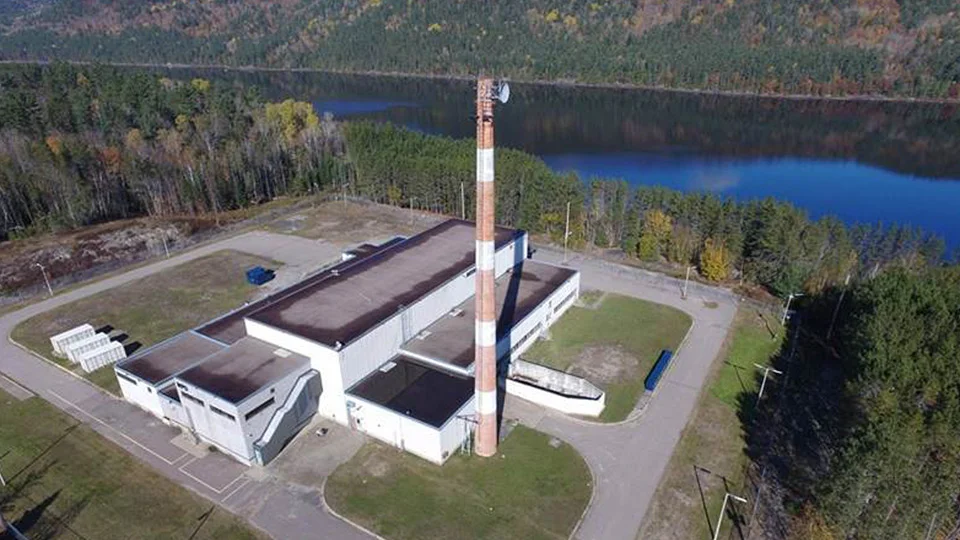
1962
NPD achieves full power—first reactor in Canada
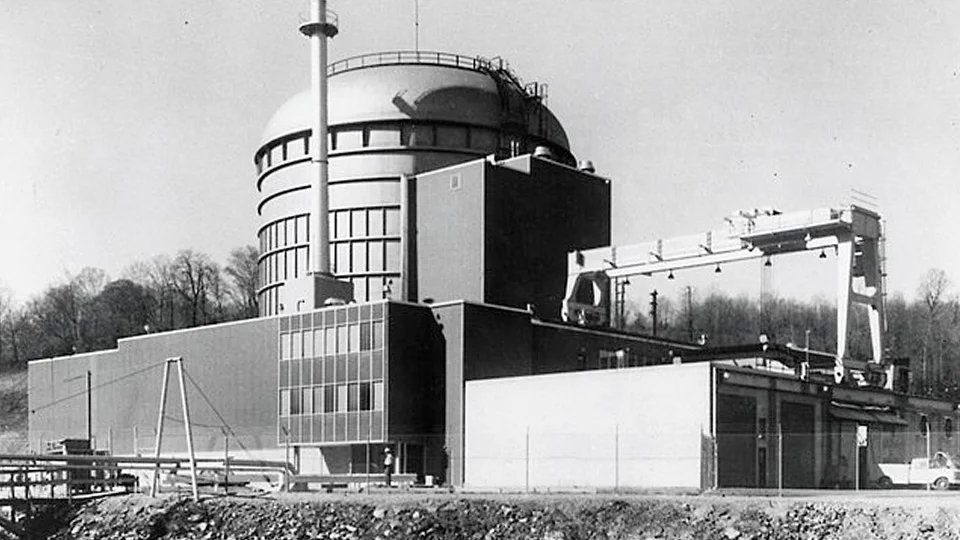
1974
25th BWR—Peach Bottom Unit 3
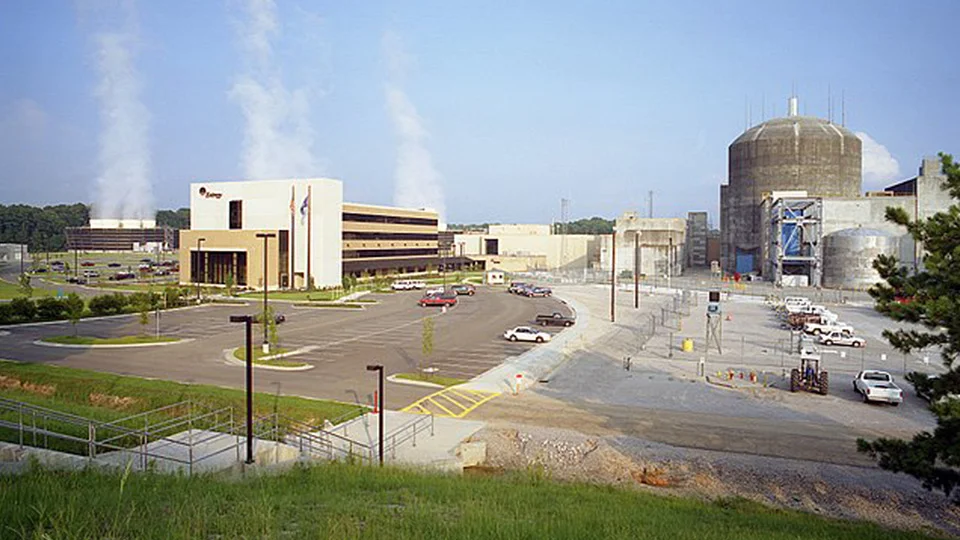
1986
50th BWR—River Bend Nuclear Generating Station

1996
1st Gen III reactor (ABWR) built on-time on-budget
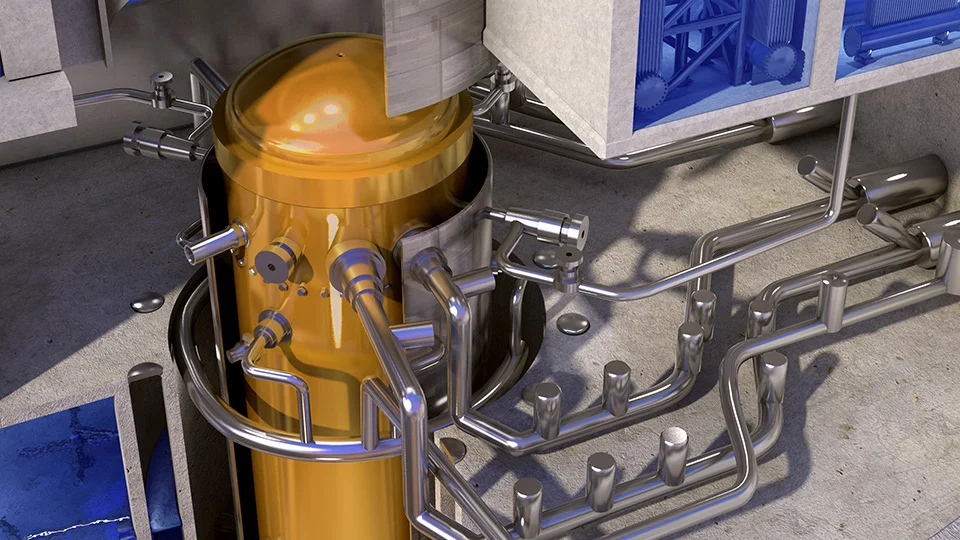
2014
ESBWR U.S. NRC License
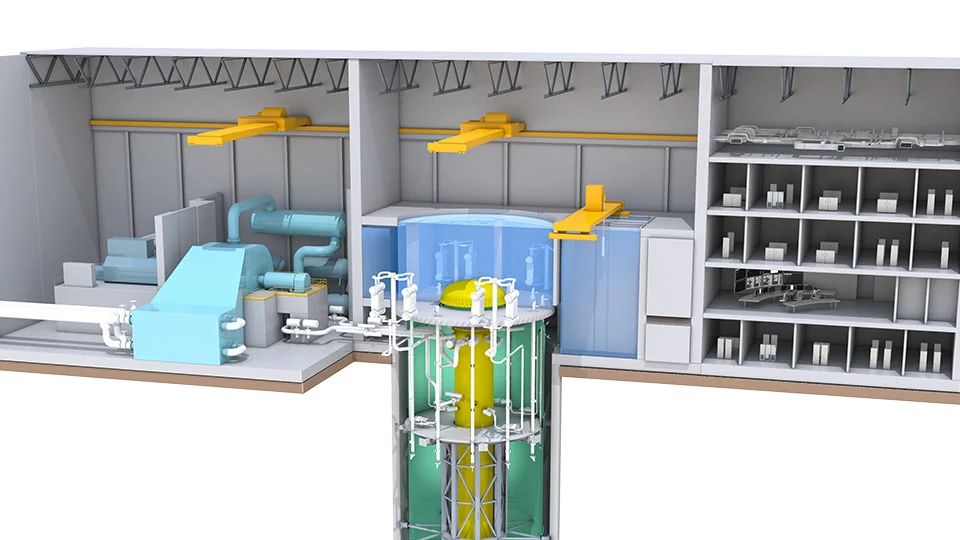
2017
BWRX-300 launched
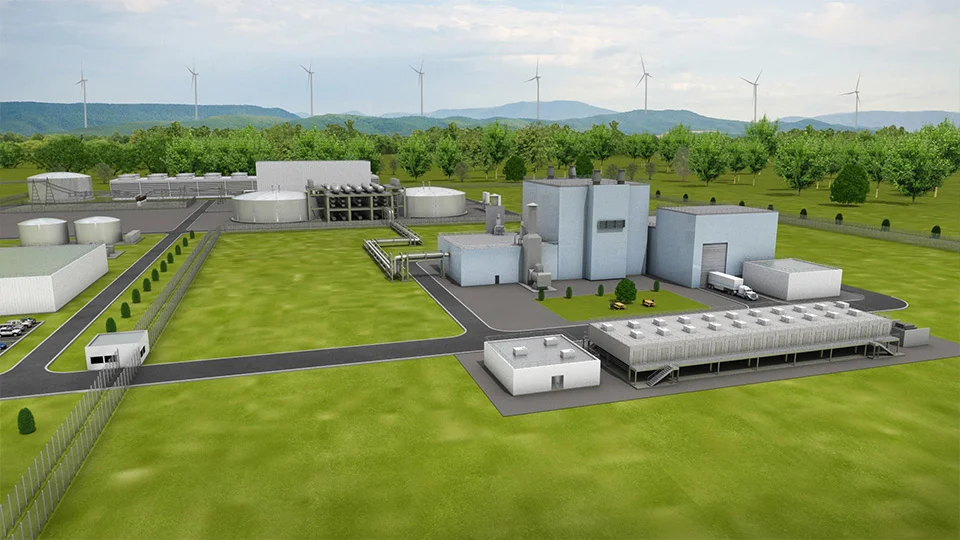
2020
Natrium™ launched
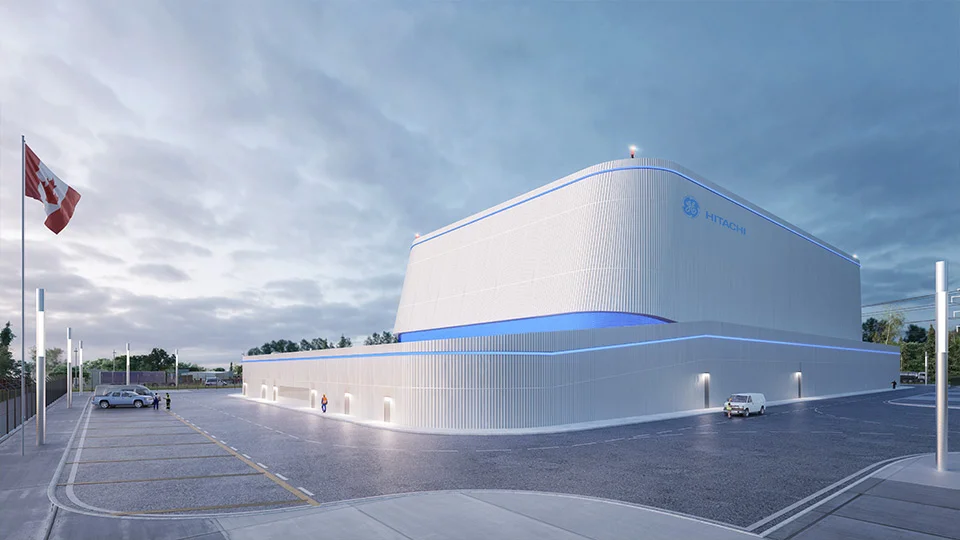
2022
First commercial contract for BWRX-300
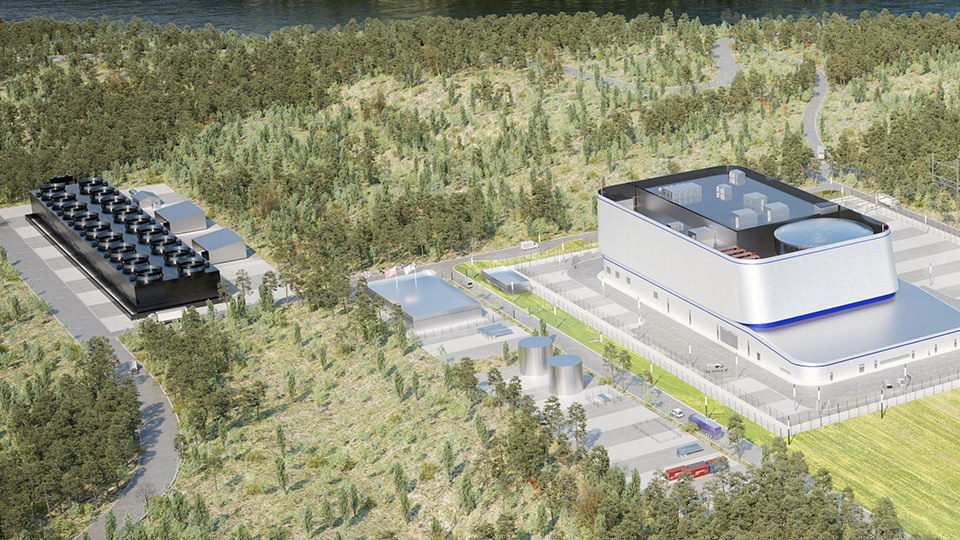
2023
TVA, OPG, and SGE invest in BWRX-300 common design

2024
BWRX-300 completes Step 1 of UK’S GDA process
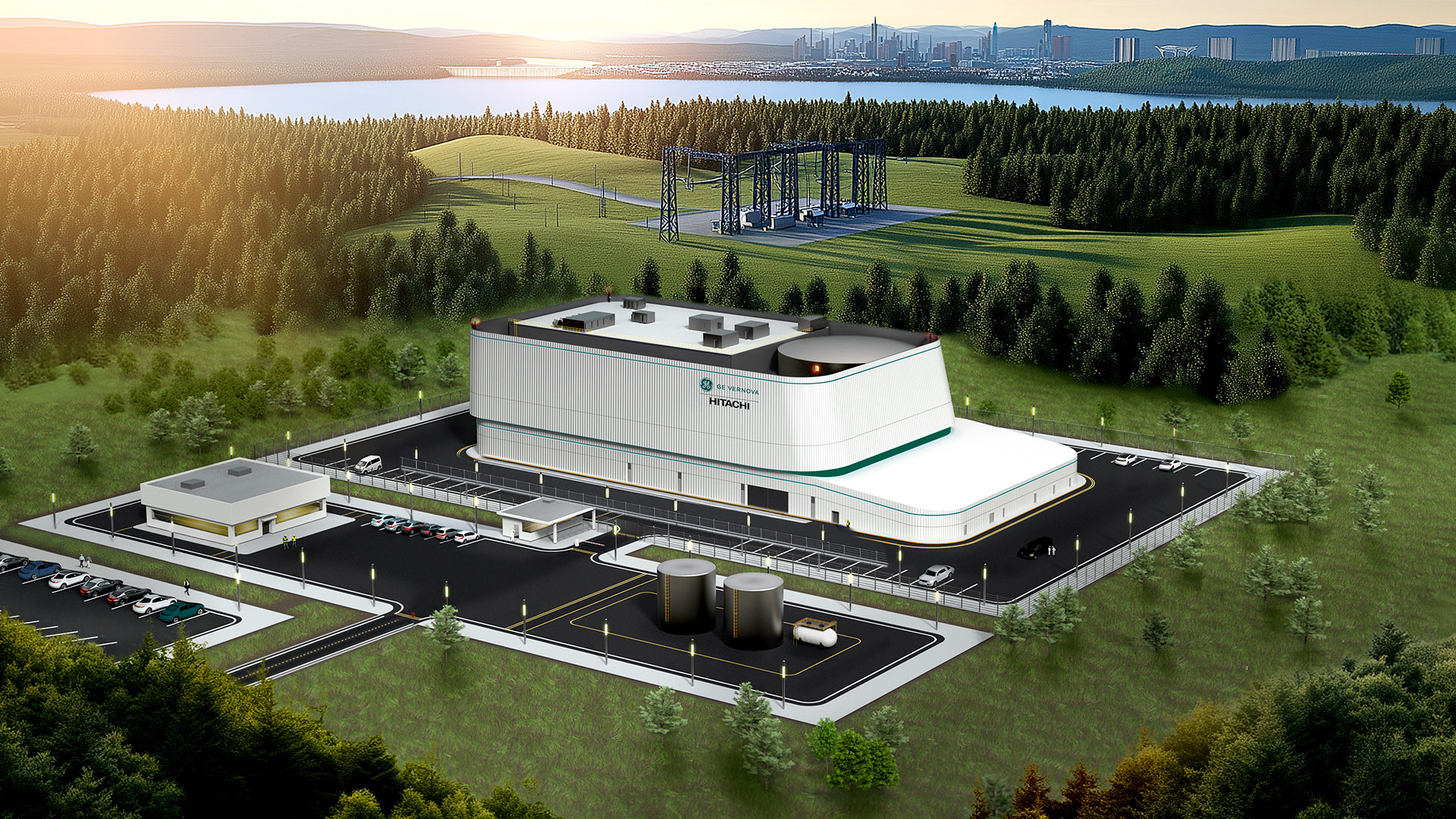
2025
Darlington site receives full approval for BWRX-300 construction
Frequently asked questions
Learn more about GE Vernova Hitachi's capabilities
What is GE Vernova Hitachi’s experience in the nuclear sector?
GE Vernova Hitachi's legacy spans over 65 years and includes licenses for 67 reactors across 10 countries. We are recognized for our track record of quality and excellence, which we plan to sustain in the future.
Is nuclear power a sustainable energy source?
Nuclear power is one of the most sustainable forms of energy available, generating electricity without releasing greenhouse gases during operation. Its role is critical in building a more environmentally responsible grid, complementing renewable power sources like wind and solar during production intermittencies.
What is the advantage of developing an SMR like the BWRX-300 compared to traditional nuclear power technologies?
The BWRX-300’s configuration is engineered to achieve lower construction and operating costs than traditional nuclear power technologies and uses licensed and commercially available GNF2 fuel.
Additionally, the BWXR-300 uses a modular construction method, enabling the unit to be built in about 24 to 36 months. Its compact configuration reduces the overall plant site by about 90% and uses about 50% less concrete per unit of energy produced compared to traditional large BWR, while still outputting 300 MW(e).
Will a nuclear power plant take up a large amount of land?
Nuclear power plants are the most land-efficient means of electricity production, requiring only 2.4 km²/TWh per year—including the plant, cooling infrastructure, and exclusion zone. However, an SMR like the BWRX-300 is significantly smaller than a traditional large unit, with a building volume significantly less than previous boiling water reactor (BWR) configurations, mitigating the impact on the surrounding environment.
Is nuclear power safe?
Many countries have safely used nuclear power for well over 60 years. It is one of the most closely monitored and regulated industries in the world. The up-to-date cybersecurity systems and well-trained on-site security personnel provide around-the-clock security.
The reactors themselves are built to stringent safety specifications, are constantly monitored, and are layered with multiple redundancy systems to maintain the strong track record of safety the industry has achieved.
The BWRX-300 is a Generation III+ reactor configuration that uses passive safety systems and natural circulation to transfer heat from the reactor and containment. This helps maintain pressure and temperature within design limits in the rare event of accident conditions or coolant loss, further improving safety margins compared with today’s Generation II and Generation III reactors in operation.
Are there other uses for nuclear technology, aside from power?
Many uses for nuclear technology exist beyond power generation, including:
- Medical applications for diagnostics or cancer treatments with radioisotopes produced as a by-product from nuclear energy.
- Using radiation to kill bacteria, insects, and parasites that can cause food-borne diseases
- Production of new crop varieties
- Industrial inspection: examining the molecular and macroscopic structure of materials
- Nuclear gauges that use a radioactive source to detect item characteristics (that is, thickness, density, or chemical makeup)
- Desalination to produce clean drinking water
- Fuel for various modes of travel
- Numerous consumer products—from smoke detectors and cosmetics to frying pans and photocopiers
- Research into producing steam supplies for industrial applications and district heating systems
How is spent nuclear fuel handled?
Spent fuel is managed through a well-established system with strict regulations, oversight, and methods for short and intermediate-term storage as well as final disposal. The BWRX-300 produces the same type of spent fuel as today’s operating reactors, meaning it would already fit into Sweden’s existing KBS-3 framework for handling nuclear materials.
Can BWRX-300 be used to produce hydrogen (for example, green steel or synthetic fuel)?
Yes, as the BWRX-300 produces electricity and heat (hot water and steam), the plant is well-suited for applications such as fossil-free hydrogen production (via electrolysis) and CO₂ capture, which can be combined with hydrogen to produce synthetic fuels.
Learn more about how e-fuels are powering the energy transition in our recent blog.
.png)
News
Stay up to date with GE Vernova Hitachi's latest involvement in Sweden’s nuclear initiative
Regions
Learn more about GE Vernova Hitachi's impact around the world
Contact us



.png)


